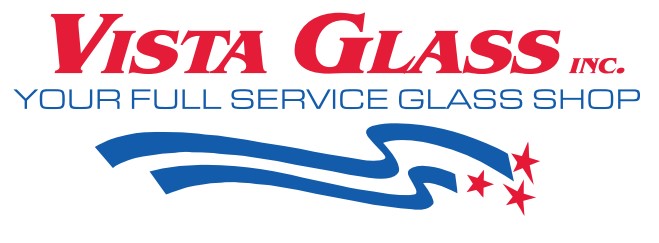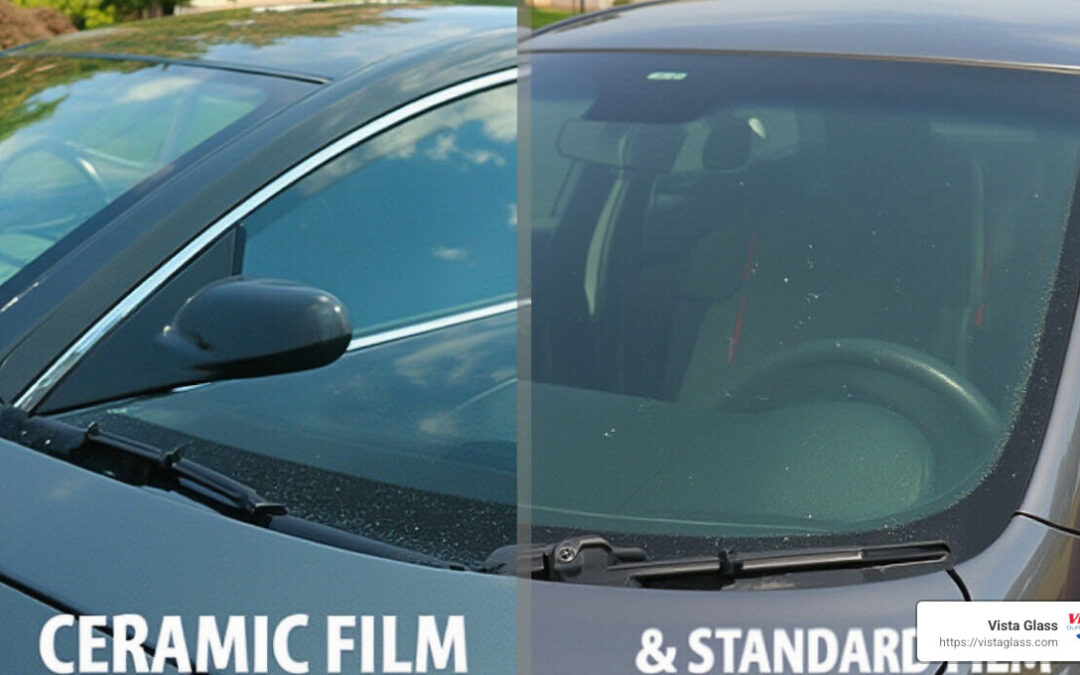Ceramic Film vs Standard Film: Top 5 Smart Benefits
When considering ceramic film vs standard film for your vehicle’s windows, understanding the differences can help you make an informed choice. Here’s a quick comparison to get you started:
- Ceramic Film: Blocks infrared light, offers superior UV protection, does not interfere with electronics, color-stable over time, premium pricing.
- Standard Film: Typically dyed, less UV protection, may interfere with electronic systems, prone to fading and bubbling, budget-friendly.
The world of window tinting has seen monumental shifts, evolving from traditional methods to cutting-edge technologies like ceramic tints. This has left many car and business owners feeling overwhelmed as they steer the choices for maximizing vehicle protection and style. The key to choosing between ceramic film vs. standard film is understanding the functionality, benefits, and limitations of each to make an educated decision that aligns with your needs.
I’m Rich Main, with vast experience in the glass industry, especially in automotive solutions. Having been in the business since my teenage years and co-founding Vista Glass, I’ve seen the impact of both ceramic film vs standard film on vehicle aesthetics and performance. Now, let’s dive deeper into the details to help you choose the best option for your vehicle.

Key terms for ceramic film vs standard film:
– benefits of ceramic tint vs regular tint
– nano ceramic tint vs ceramic tint
– quality car tints
Understanding Standard Tint
Standard tint, often referred to as dyed film, is a popular choice for those looking for an affordable way to improve their vehicle’s appearance and privacy. It’s a straightforward option that many drivers opt for due to its cost-effective nature.
Cost-Effective Solution
One of the biggest draws of standard tint is its affordability. Compared to more advanced options like ceramic tint, dyed films are budget-friendly. This makes them accessible for many car owners who want to improve their vehicle’s look without breaking the bank.
Privacy and UV Protection
Standard tints provide a basic level of privacy by making it harder for outsiders to see inside your vehicle. They also offer some UV protection, blocking out harmful rays that can damage your skin and your car’s interior. While they don’t block UV rays as effectively as ceramic films, they still offer a decent level of protection.
Heat Reduction
Another benefit of standard tint is its ability to reduce heat inside the car. By absorbing solar energy, these films can help keep the cabin cooler during hot days. However, they don’t perform as well as ceramic tints in this regard.
Limitations of Standard Tint
Despite their advantages, standard tints come with several limitations:
- Fading and Bubbling: Over time, dyed films can fade, changing color and losing their effectiveness. They are also more prone to bubbling, which can affect both the appearance and functionality of the tint.
- Less Durability: Standard tints are not as durable as ceramic options. They can scratch more easily and may need to be replaced sooner, adding to the long-term cost.
- Interference with Electronics: Some standard tints can interfere with electronic signals, such as GPS and mobile reception, which can be a significant drawback for tech-savvy drivers.
Understanding these factors is crucial when choosing between ceramic film vs standard film. While standard tints offer a cost-effective solution, their limitations might make ceramic tints a more appealing option for those seeking longevity and superior performance.
The Advantages of Ceramic Tint
Ceramic tint is the superhero of window films, thanks to its nano-ceramic technology. Unlike standard tints, which rely on dyes, ceramic tint incorporates microscopic ceramic particles. These particles work wonders in blocking out the sun’s harmful rays and keeping your vehicle cool.
Superior UV Protection
Ceramic tint is like a high-tech shield against UV rays. It blocks up to 99% of these harmful rays, which helps protect your skin and prevents your car’s interior from fading. This is a significant upgrade from standard tints, which offer only basic UV protection.
Exceptional Heat Rejection
When it comes to heat rejection, ceramic tint leads the way. It can block up to 98% of solar heat, keeping your car’s interior cooler even on the hottest days. This means you won’t have to crank up the air conditioning as much, which can save energy and money.
Infrared Rejection
Infrared radiation is responsible for most of the heat we feel from the sun. Ceramic tint excels at rejecting infrared light, with some films blocking up to 90% of it. This makes your drive significantly cooler and more comfortable.
Durability and Longevity
Ceramic tint is built to last. It’s highly resistant to fading and doesn’t suffer from issues like bubbling or peeling, which are common with cheaper tints. This durability ensures that your tint maintains its performance and appearance for years to come.
Minimal Signal Interference
One of the standout features of ceramic tint is its minimal interference with electronic signals. Unlike some standard tints, ceramic films allow GPS, mobile, and other electronic signals to pass through without disruption. This is a big plus for those who rely on technology during their drive.
In summary, ceramic tint offers a host of advantages that make it a compelling choice for those seeking maximum protection and performance. Its advanced nano-ceramic technology provides superior UV and heat rejection, while its durability ensures long-lasting benefits. For anyone considering ceramic film vs standard film, these advantages highlight why ceramic is often the clear choice.
Ceramic Film vs Standard Film: Key Differences
When deciding between ceramic film vs standard film, understand the key differences that set them apart. Let’s break down the main factors: UV and heat rejection, infrared protection, visual appeal, lifespan, and durability.
UV and Heat Rejection
Ceramic film is a champion in UV and heat rejection. It blocks up to 99% of harmful UV rays, safeguarding your skin and preserving your car’s interior. Additionally, it can reject up to 98% of solar heat, keeping your vehicle cooler. Standard film, while providing some UV protection, falls short in heat rejection compared to ceramic options.
Infrared Protection
Infrared radiation is a major contributor to the heat inside your car. Ceramic films are specifically designed to reject a significant portion of infrared radiation, often filtering out up to 90%. Standard films lack this advanced capability, making them less effective at reducing the heat felt inside your vehicle.
Visual Appeal
Both ceramic and standard films come in various shades, allowing you to choose the level of darkness that suits your style and privacy needs. However, ceramic film offers better clarity and reduces glare more effectively. This means a clearer view from inside the car, enhancing both safety and comfort.
Lifespan
Ceramic films are known for their longevity. They resist fading, bubbling, and peeling, maintaining their appearance and effectiveness for years. Standard films, especially those of lower quality, may fade and degrade more quickly, leading to more frequent replacements.

Durability
Durability is another area where ceramic films shine. They are more resistant to scratches and damage, providing a lasting solution for window tinting. Standard films, particularly cheaper versions, can be prone to wear and tear, making them less reliable over time.
In conclusion, when comparing ceramic film vs standard film, ceramic film stands out with its superior UV and heat rejection, excellent infrared protection, and long-lasting durability. These features make it a worthwhile investment for those seeking top-notch performance and protection for their vehicles.
Frequently Asked Questions about Ceramic Film vs Standard Film
Is ceramic tint better than regular tint?
Yes, ceramic tint is generally considered superior to regular tint for several reasons. It offers better visibility and glare reduction, making it easier to see while driving, especially during sunny days. Ceramic film blocks up to 99% of UV rays and significantly reduces infrared heat, keeping your car cooler compared to standard tints.
While the initial cost is higher, ceramic tint’s durability and long lifespan can make it a more cost-effective choice over time. Regular tints, often made from dyed film, may fade, bubble, or peel, leading to more frequent replacements.
Can you see better through ceramic tint?
Absolutely. Ceramic tint provides superior visibility compared to regular tint. It reduces sun glare, which can be a major distraction while driving. This is especially beneficial for nighttime driving, where glare from headlights and streetlights can be problematic.
The advanced nano-ceramic technology used in ceramic tint ensures that your view from inside the car remains clear and sharp. This clarity not only improves safety but also makes your driving experience more comfortable.
What are the downsides of ceramic tint?
Despite its many advantages, ceramic tint does have a few downsides. The most notable is the higher cost. Ceramic films are more expensive than standard tints due to their advanced technology and superior performance.
Additionally, ceramic tint may have limited color options compared to regular tints. If you’re looking for a specific shade to match your vehicle’s style, you might find fewer choices with ceramic films.
Lastly, professional installation is recommended to ensure the best results. While this adds to the initial cost, it helps maximize the tint’s performance and longevity, preventing issues like bubbling or peeling.

Conclusion
Choosing the right window tint for your vehicle can be a daunting task, but it doesn’t have to be. At Vista Glass, we aim to make this decision as straightforward as possible by providing clear information and expert guidance. Our commitment to customer satisfaction is at the heart of everything we do. With over 25 years of experience in the glass industry, we understand the unique needs of our customers in Tucson and surrounding areas.
When it comes to ceramic film vs standard film, making an informed choice is crucial. Ceramic tints offer superior UV and heat protection, durability, and improved visibility, making them a popular choice for those looking to invest in long-term performance. On the other hand, standard films are more budget-friendly and offer decent privacy and aesthetics, but may require more frequent replacements.
We believe in empowering our customers with knowledge, so you can choose the tint that best fits your needs and budget. Our mobile service ensures that you receive top-quality installation at your convenience, whether you’re at home or work. This flexibility, combined with our dedication to quality, makes Vista Glass the go-to choice for window tinting in Tucson.
For those looking to improve their vehicle’s comfort and style while ensuring long-lasting protection, ceramic window tint is a wise investment. Trust us to deliver excellent results and a seamless experience.
Ready to transform your driving experience? Contact us today for a consultation and let our experts guide you through the process. Your satisfaction is our top priority, and we look forward to serving you with excellence.

